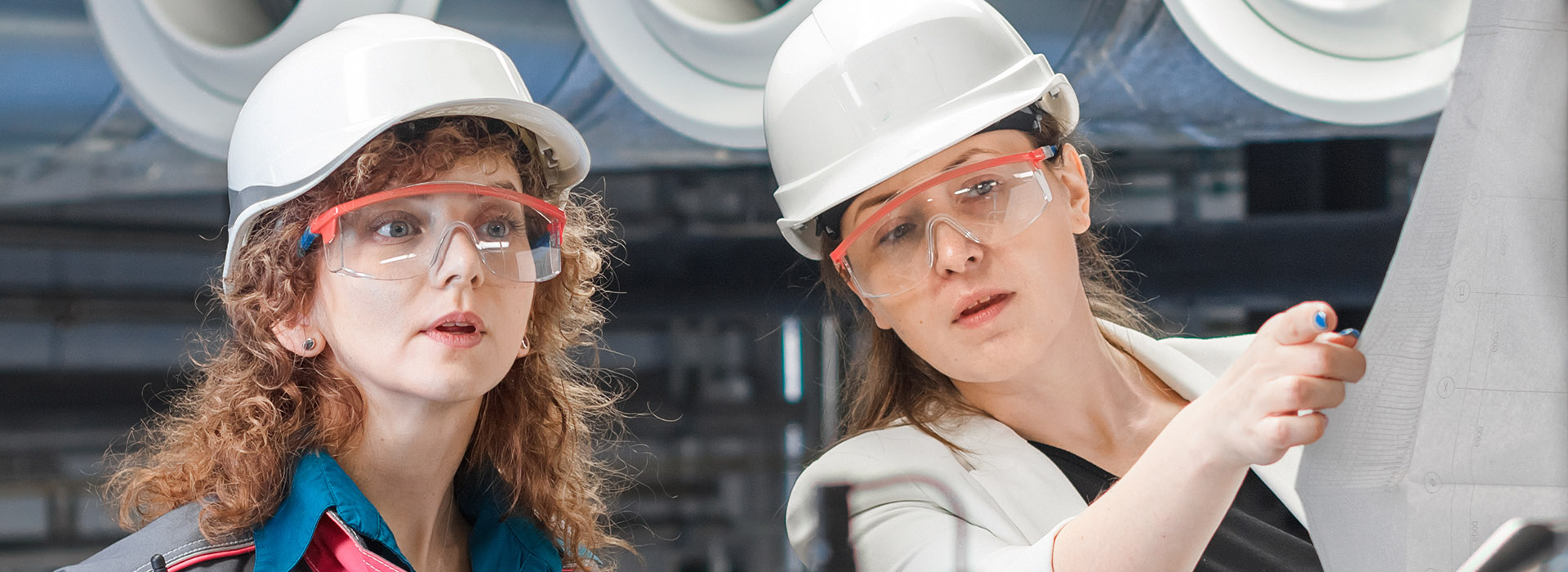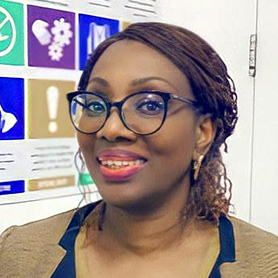Peju Arenyeka: Health and safety behaviour improvement
Initially in food safety, overseeing a root cause analysis and lessons learnt from a laboratory accident triggered Peju’s passion for Health and Safety. Here she talks about why a skill for creating order out of chaos, an analytical mind and human interaction has helped her keep Health and Safety Performance moving in the right direction.


Peju Arenyeka
Senior Health, Safety and Environment manager, Europe Snacks Group
Q.
What is it about health and safety that inspires and keeps you motivated?
I find the deep dive into the legal requirements and the challenge of learning how to apply those rules compelling. Then there is the exciting part of using that knowledge to strategically plan fit-for- purpose health and safety programmes for a business-getting buy-in and then putting health and safety systems in place that really makes a difference. There is always a lot of business information and data given to you from different business areas that require evaluation and analysis before controls can be implemented adequately. So an ability to create order out of chaos helps to make sense of what is important and beneficial. I have had the unique perspective of working in health and safety across several different industries, including enforcement, transport, construction and various food industries. This experience has enabled me to address and implement strategies that positively influence people's knowledge and practice of health and safety. This inspires me. I took up my current role during the COVID-19 lockdown and although it was a daunting time riddled with unknowns, knowing that I could adapt my previous skills and learnings enabled me to hit the ground running.
Q.
How has your experience of different safety cultures guided your approach to implementing health and safety programmes?
I have seen that one size does not always fit in the workplace, so I have always tried to adapt and move with the times. Health and safety is certainly moving away from taking a rule-based approach, although it is fundamentally based on legislation. Obviously, some industries must be heavily reliant on following rules, while others now prefer a more subtle behind the scenes approach. Nowadays, health and safety practitioners have seen that simply telling people to follow the rules does not guarantee a successful outcome. Balance is the key. There is a move away from strict health and safety guidelines as the primary driver to one where the focus is on changing safety behaviours. Health and safety behaviour improvement is now a constant process for most businesses. Despite the different cultures I have experienced, a collaborative approach to health and safety that involves Board level communication to factory operative level to achieve buy-in still achieves the most success. My approach is to ensure that everyone is clear on the baseline reasons why health and safety are essential and then embedding them into business objectives to achieve results.
Q.
How possible is a change in safety culture, and what tools would you use?
We are all human first, and change is often uncomfortable. However, it is possible to change the safety culture over time. For a good safety culture to be embedded in an organisation, it is essential to repeat safety improvement messages constantly. This tends to encourage a level of retention that can impact behaviours. It is also important to enable the safety change message across a range of platforms and in different learning formats, such as emails, posters, briefings, training, and coaching during meetings and dialogues so that the message resonates individually. Safety culture change is about helping new guidelines become second nature to create a natural safety mindset that is part of our daily lives. We have introduced a health and safety behaviour communication tool called 'safety touch point'. This involves a short discussion before the start of every meeting at work for staff to share incident information in and outside of the workplace. We've also recently implemented a new near-miss tool, called "see it, say it," which is turning out to be a great way to identify hazards and implement corrective measures required in the workplace. The improvements from the use of this tool have shown noticeable safety ownership, creating improved health and safety awareness across the business. As a result, we are beginning to see the desired change in our safety culture.
"For a good safety culture to be embedded in an organisation, it is essential to repeat safety improvement messages constantly."
Q.
What has COVID-19 taught you that can help improve health and safety?
There is no doubt that this virus has significantly changed the world. Apart from the improved health and hygiene protocols in the workplace, it's also highlighted the importance of having the right processes and communication strategies in place. While COVID-19 has been devastating, it has boosted the health and safety profession from relative obscurity into the forefront of everyone's minds at work.
We have now become more comfortable talking about how we feel and, more importantly, asking each other if everything is okay. Our conversations now have a focus on mental resilience and health. Working from home for me has also provided an opportunity to think about how I can achieve a better work/life balance and still be visible where required. It's highlighted the importance of clear risk assessments and why staff safety is paramount. COVID-19 has also given me a chance to embrace uncertainties, improve health and safety plans, think about emerging risks and be resilient to support the business better
Q.
What are your views on how we can best employ technology in a global health and safety capacity?
I think technology offers enormous benefits on both a personal and organisational level. Whether it's using drones for routine inspections, creating interactive risk assessments or remote training or audits, we should all embrace how it can simplify and improve safe working practices. From an organisational perspective, as we have seen during this pandemic, technology has enabled us to meet up virtually much more, which is invaluable for a global organisation. Technology has broadened our global capacity for environmental management and savings. By providing avenues to standardise health and safety programmes and benchmark key safety performance, it has given us much-needed commonality. Our virtual meetings have become workshops where we learn from each other on how safety rules can be further embedded, and culture differences and perceptions of risk are acknowledged. However, as we accept and use technology more we should get the balance right, particularly with the use of artificial intelligence (AI) technology, which enables machinery to simulate human behaviour. Machines fail, so we will still need the human interface. Technology enables us to adapt safety protocols and guidelines to keep them relevant for different regions while still retaining their core tenets to benchmark success accurately. It is sometimes the simple use of technology that gives us the most significant benefits
"When leaders in organisations own their health and safety responsibilities and set examples that staff can follow, its importance becomes visible and tangible across the business and health and safety improves."
Q.
How can we keep health and safety improving?
Whether it's the guidance we received from our parents or from an inspirational role model, as humans we tend to follow examples. When leaders in organisations own their health and safety responsibilities and set examples that staff can follow, its importance becomes visible and tangible across the business and health and safety improves. That's why good safety is good business. It is also important to put matrices that benchmark health and safety improvements into a plan that everyone can relate to. Businesses should also factor in health and safety audits to assess how well processes are being followed and to endorse performance. Finally, even with all the performance indicators and audits in place, we must acknowledge, praise and encourage people when health and safety improvements have been accomplished. If the best assets in the workplace, our people, go unrecognised, we could be stifled in our attempts to keep health and safety improving